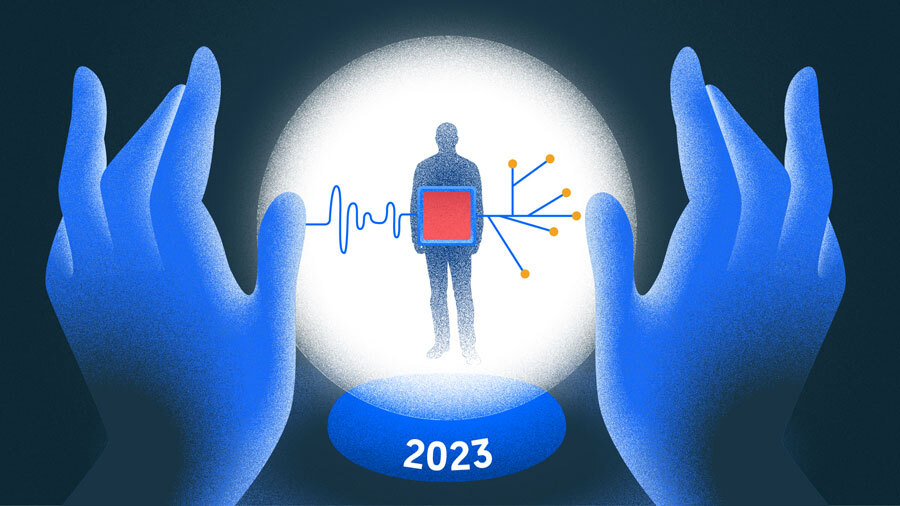When I think about health care in 2023, I think about personalized medicine.
Advances in data science, quantum computing and biology have collided to transform how we treat illness. Just as we decry bloodletting today, one day future scientists will laugh at how we prescribe medication based on “symptoms” and “weight” and not genetic data.
I’m talking about the “omics”: transcriptomics, metabolomics, proteomics and (everyone’s favorite), genomics. We’ve only recently begun to tap into this set of sciences to create tailor-made medicines and treatments for each person instead of one-size-fits-all drugs.
Search less. Close more.
Grow your revenue with all-in-one prospecting solutions powered by the leader in private-company data.
The omics is a booming industry in biotech, garnering more than $2.4 billion in venture funding as we entered December 2022, according to Crunchbase data. Since 2019, funding has nearly tripled for startups parsing through the intricacies of cells to understand the sources of diseases on a molecular level, and how to manage or eradicate them. The pandemic sparked advances in omics in the form of rapid diagnostic tests and the mRNA COVID-19 vaccine.
Even Amazon Web Services got involved in November when it introduced Amazon Omics.
Many of these startups can turn a profit long before they actually make and sell a drug, simply by licensing out their platform to other biotech companies and employing a fee-for-service model. At a time when venture firms are pulling back on funding, the omics are likely to see far more investment from biotech-minded VCs.
“From an investor standpoint, they’re derisking their business model and they may not need as much money. All of these go hand-in-hand with genomics and bioinformatics,” said David Crean, a longtime biotech investor and managing general partner at Cardiff Advisory. “You have to have a good database to profile all this stuff and that ultimately drives personalized medicine.
You’re going to see investors putting money in that.”
What are the omics?
Seemingly every day a new kind of omic is popping into the life science lexicon, but let’s focus on four: genomics, metabolomics, proteomics and transcriptomics.
You may have heard of genomics, the mapping of every strand of DNA that makes up a person. Genomics can allow doctors to predict what kinds of diseases a patient will get long before they present symptoms, staving off chronic illness.
We’ve talked about metabolomics before and how it can be used to tailor medicines to properly work in the human body. Using metabolomics, pharma companies can see how drugs metabolize in the body and change them so they work faster, better and safer.
Then there’s proteomics, the study of proteins, where most diseases are manifested. Drug development has a 90% failure rate, due in part by the fact that most drugs are built to latch onto targets in the body that aren’t successful. Protein study is the key to unlocking new targets in the body for drugs to swim to.
Transcriptomics, which studies RNA, can help scientists tap into which genes are working, and links the genome and proteome together.
“It’s simply a march toward having a truly multi-omic ability with biology,” said Jack Geremia, co-founder of metabolomics startup Matterworks. “I would say that probably one of the biggest advances of the last part of the last century and the beginning of this one was rapid, efficient, effective sequencing for DNA. Those tools had to be built.”
Why does this matter?
There’s a guiding principle doctors use when prescribing medication called the five rights: the right patient, the right drug, the right route, the right dose and the right time.
If you’ve ever been prescribed medication, you’ve seen the process play out: A doctor prescribes a cocktail of drugs, often at an amount set by middle-of-the-road standards, and then spends every month with the patient tinkering with dose adjustments or cycling through different medications, weighing efficacy against side effects until the right combination works.
But identifying what “right” looks like will be very different in a world governed by omics, where scientists will be able to spend more time looking at each patients’ individual cells rather than making guesses based on blood pressure or body temperature.
Here’s the thing: We don’t know where many diseases come from. We can’t predict them or spot them until they’re already present. Many of our treatments today are playing catch-up to ailments that are unpredictable and evolving.
Venture is pumping money into omics to solve these problems. Cellarity raised $121 million in October for its ability to use genomics to create cancer treatments. Transcriptomics startup Vizgen raised $85.2 million in June to advance drug discovery, and expect far better returns on investment than traditional biotech startups.
By mapping out every molecule, gene function and cell in the human body, scientists can find patterns that may allow them to predict what diseases will occur, how they will progress, and how to make effective treatments to lower pharma’s dismal 90% failure rate, allowing pharma companies to rake in more money.
This vast data would be useless without advancements in machine learning and computing to swallow this bulk of information and spit out useful insights.
“Genomics was the first omic to really be popularized. That’s actually just one data stream. But it turns out biology is crazy complex, therefore it makes sense that we would need other omics to really understand biology,” said Sara Choi, a Wing VC partner investing in data-heavy biotech companies. “So it’s not just genomics that matter, but it could be transcriptomics, it could be metabolomics, proteomics. And so I think that the very basic data collection was just not there.”

Stay up to date with recent funding rounds, acquisitions, and more with the Crunchbase Daily.







![Illustration of 50+ woman on smartphone. [Dom Guzman]](https://news.crunchbase.com/wp-content/uploads/2021/01/Femtech_-300x168.jpg)

![Illustration of pandemic pet pampering. [Dom Guzman]](https://news.crunchbase.com/wp-content/uploads/2021/03/Pets-2-300x168.jpg)

67.1K Followers